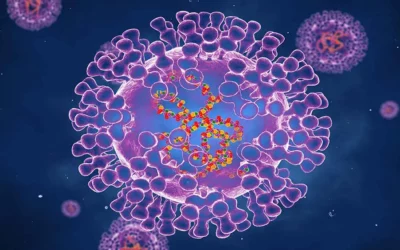A drug-resistant yeast that spreads in healthcare facilities
What is Candida auris?
A type of yeast called Candida auris (C. auris) is causing severe illness in hospitalized patients in healthcare facilities across the globe. This fungus can enter the bloodstream and spread throughout the body, causing serious invasive infections. Antifungal drugs are commonly used to treat Candida infections, but C. auris is often resistant to multiple antifungal medications. Additionally, C. auris can be difficult to identify using standard laboratory testing and is often misidentified delaying appropriate treatment and precautions. In healthcare settings, C. auris has been documented to spread through contact with contaminated surfaces or equipment and from patient to patient.
Why is C. auris a concern?
The Centers for Disease Control and Prevention (CDC) is concerned for
the following reasons:
- It is often multi-drug resistant, making it difficult to treat.
- It is difficult to identify by symptoms. People who get invasive Candida infections are often already sick from other medical conditions.
- It is difficult to identify by culture. Special laboratory technology is required.
- It can cause serious infections. More than one in three patients die when an invasive C. auris infection occurs in the blood, brain or heart.
- It can spread quickly and cause outbreaks in hospitals and nursing homes.
- It can persist for weeks on surfaces in healthcare environments,
- including portable medical equipment.
Who is at risk?
Risk factors for C. auris infections are similar to those for other types of Candida infections and include:
- A recent history of receiving medical care outside the United States.
- Lengthy hospitalization or stays in post-acute care facilities.
- A history of broad-spectrum antibiotic or anti-fungal use.
- Underlying medical conditions or procedures that compromise a patient’s immune system.
- The presence of invasive devices, such as central venous catheters and breathing/feeding tubes.
Cleaning & Disinfecting
The CDC recommends use of a disinfectant that is registered with the Environmental Protection Agency (EPA)
and is effective against C. auris. If a product with an EPA claim is not accessible or otherwise suitable, the EPA
recommends using a disinfectant that is effective against C. difficile. Disinfectants with EPA-registered kill claims
for C. difficile have been found to be effective against C. auris. It is important to follow the directions for use,
including applying the product for the correct contact time. Increased attention to detail and monitoring for
compliance should include:
- Surfaces in patient rooms, with special attention to high touch surfaces
- Surfaces in areas where patients receive care (e.g., radiology, physical therapy, etc.)
- Mobile and shared equipment (e.g., ventilators, physical therapy equipment, axillary thermometers)









0 Comments